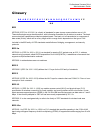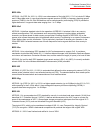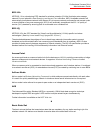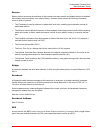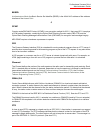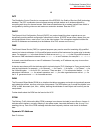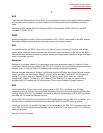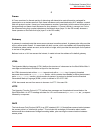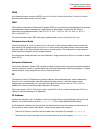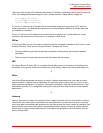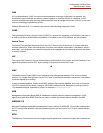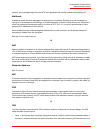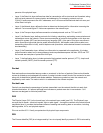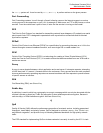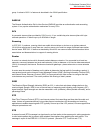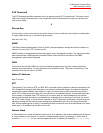
Professional Access Point
Administrator Guide
Glossary - 311
IBSS
An independent basic service set (IBSS) is an Ad-hoc Mode Wireless Networking Framework in which
stations communicate directly with each other.
IEEE
The Institute of Electrical and Electronic Engineers (IEEE) is an international standards body that develops
and establishes industry standards for a broad range of technologies, including the 802 family of
networking and wireless standards. (See 802, 802.1x, 802.11, 802.11a, 802.11b, 802.11e, 802.11f,
802.11g, and 802.11i.)
For more information about IEEE task groups and standards, see http://standards.ieee.org/.
Infrastructure Mode
Infrastructure Mode is a Wireless Networking Framework in which wireless stations communicate with
each other by first going through an Access Point. In this mode, the wireless stations can communicate
with each other or can communicate with hosts on a wired network. The access point is connected to a
wired network and supports a set of wireless stations.
An infrastructure mode framework can be provided by a single access point (BSS) or a number of access
points (ESS).
Intrusion Detection
The Intrusion Detection System (IDS) inspects all inbound network activity and reports suspicious patterns
that may indicate a network or system attack from someone attempting to break into the system. It reports
access attempts using unsupported or known insecure protocols.
IP
The Internet Protocol (IP) specifies the format of packets, also called datagrams, and the addressing
scheme. IP is a connectionless, best-effort packet switching protocol. It provides packet routing,
fragmentation and reassembly. It is combined with higher-level protocols, such as TCP or UDP, to
establish the virtual connection between destination and source.
The current version of IP is IPv4. A new version, called IPv6 or IPng, is under development. IPv6 is an
attempt to solve the shortage of IP addresses.
IP Address
Systems are defined by their IP address, a four-byte (octet) number uniquely defining each host on the
Internet. It is usually shown in the form
192.168.2.254
. This is called dotted-decimal notation.
An IP address is partitioned into two portions: the network prefix and a host number on that network. A
Subnet Mask is used to define the portions. There are two special host numbers:
•The Network Address consists of a host number that is all zeroes (for example,
192.168.2.0
).
•The Broadcast Address consists of a host number that is all ones (for example,
192.168.2.255
).



